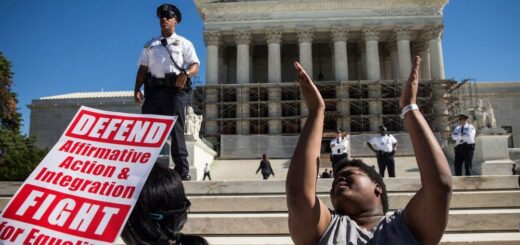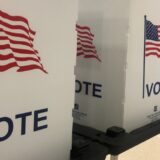Intellectual Property in Gambling
Gambling is a booming industry, with more and more people taking part in various forms of gaming, from virtual casinos to sports betting. The full variety of games that are popular with people can be found on sites such as Jokaroom, which offers both classic blackjack and baccarat and more modern games such as video poker.
The burgeoning gambling industry has brought forth an escalated susceptibility to copyright infringement and intellectual property transgressions. To fortify your rights and shield intellectual assets within this landscape, a profound comprehension of diverse intellectual property classifications and proactive strategies stands as a pivotal necessity.
Acquiring a meticulous understanding of these elements becomes instrumental in safeguarding and upholding intellectual property integrity within the dynamic realm of gambling.
What Are The Complexities of Software Copyright Protection?
The digital age has brought about rapid advancements in software technology, making it easier than ever for companies to produce and distribute their software products. However, with these opportunities come complex legal challenges surrounding software copyright protection.
Software copyright laws have developed to protect the financial investments of those who create software and limit unauthorized distribution. To safeguard their intellectual property, companies must navigate a maze of legal statutes and policies, including the intricacies of digital rights management and patent laws.
Ensuring compliance with these regulations while maintaining operational efficiency is a continuing struggle, but it is essential in the fast-paced world of software development. The complexities of software copyright protection require education and expertise to safeguard the valuable assets of any business.
Known cases of product protection
In the world of software development, intellectual property rights are crucial. Manufacturers put in a considerable amount of effort and resources to develop software, making it imperative to protect their rights.
Unfortunately, there have been instances where manufacturers could not prove their rightful ownership of a software product, leading to legal battles and public scrutiny. Some of the most famous cases involve big players in the industry, such as Microsoft and Google.
These companies faced allegations of intellectual property violations, forcing them to defend their rights in court. While some cases ended in settlement agreements, others dragged on for years, leaving a lasting impact on the software industry.
Implementing a DMCA
Safeguarding your website and its content against copyright infringement is paramount. Many website owners face uncertainty about the technical aspects involved in adding a DMCA emblem, pondering whether to hire a programmer or tackle the task themselves. Yet, embedding a DMCA emblem is a relatively straightforward procedure, manageable even with limited technical know-how.
However, precision is crucial; ensuring the emblem links accurately to your registered DMCA agent and relevant legal disclaimers is essential. As a website owner, the responsibility to shield your content rests on your shoulders, and integrating a DMCA emblem stands as a straightforward yet pivotal step in fortifying your intellectual property.
DMCA violation notice
Dealing with a DMCA violation notice can be a frustrating and worrying experience for any website owner. If you have received a DMCA notice and your site has disappeared from search results, it’s important to take action immediately. First, review the notice carefully and ensure that you understand the specific content that has been flagged. If the content is indeed infringing, remove it promptly.
If you believe the notice is incorrect or have questions, consider seeking legal advice. Next, file a counter-notice if you believe the infringement allegation is unfounded. Finally, work with search engine providers to resolve any issues related to search result visibility. Remember, taking prompt and appropriate action can help mitigate the negative impact of a DMCA violation notice.
Tracking Copyright Infringement
In an era dominated by digital goods and technological advancements, copyright infringement has become more intricate yet traceable. Unlike physical goods, digital products leave identifiable digital footprints that enforcement agencies can track using metadata and other techniques.
The internet’s widespread use allows easier access to infringing material but also aids authorities in tracing distributors. Protecting intellectual property requires vigilant monitoring and legal action against infringement. Consequences, including fines and imprisonment, highlight the seriousness of such violations. Understanding how digital products are traced empowers individuals to avoid unlawful activities.
How copyright infringement is tracked on physical products
Protecting intellectual property is crucial in the digital age, where reproducing copyrighted material is effortless. Copyright infringement isn’t limited to online spaces; it also occurs with unauthorized use of copyrighted content on physical products, like knock-off designer items or pirated DVDs.
To combat this, tracking methods, such as microchips or watermarking, authenticate the legitimacy of physical goods. These measures allow companies to monitor and ensure legal use of their copyrighted material, proactively combating infringement and safeguarding their brand.
Difficult copyright cases
As the world becomes increasingly globalized, the issue of copyright infringement becomes ever more complex. When it comes to workshop signboards, the question is whether using a similar style to another workshop in a different country constitutes an infringement of copyright.
To answer this question, we must dive into the legal details of copyright law and analyze the similarities and differences between the signboards. While a straightforward answer may not exist, it is clear that respecting intellectual property and minimizing the risk of legal action should be top priorities for any business owner. In short, before emulating another workshop’s signboard, it is essential to weigh the potential risks against the potential benefits.
Importance of Educational Programmes
It is also important to ensure that your employees, contractors, and partners understand the importance of protecting intellectual property in gambling. This can be done through education and training programs that focus on copyright and trademark law, as well as the consequences of failing to follow these laws. By creating a culture that values intellectual property and understands the importance of protecting it, you will be better equipped to defend your rights and prevent theft or infringement.
Who can organise an educational course?
For business owners, educating employees on copyright laws is crucial. While arranging a course might seem challenging, options are available. Hire a copyright attorney for a tailored session or use online resources like the U.S. Copyright Office or Copyright Alliance. Such education not only protects your business legally but also fosters ethical business practices.
Work With Quality Lawyers
Finally, it is important to work with experienced intellectual property attorneys who can help you navigate the complex legal landscape of the gambling industry. These attorneys will be able to provide you with advice and guidance on how to best protect your intellectual property, as well as represent you in any legal disputes that may arise.
The most famous law firms
Europe harbors top-tier law firms specializing in copyright law, housed in cities like London, Paris, and Berlin. Renowned globally, these firms boast adept lawyers offering expert guidance in copyright disputes and protection. Trusted by companies worldwide, these firms stand as premier choices for legal services in this domain.


















